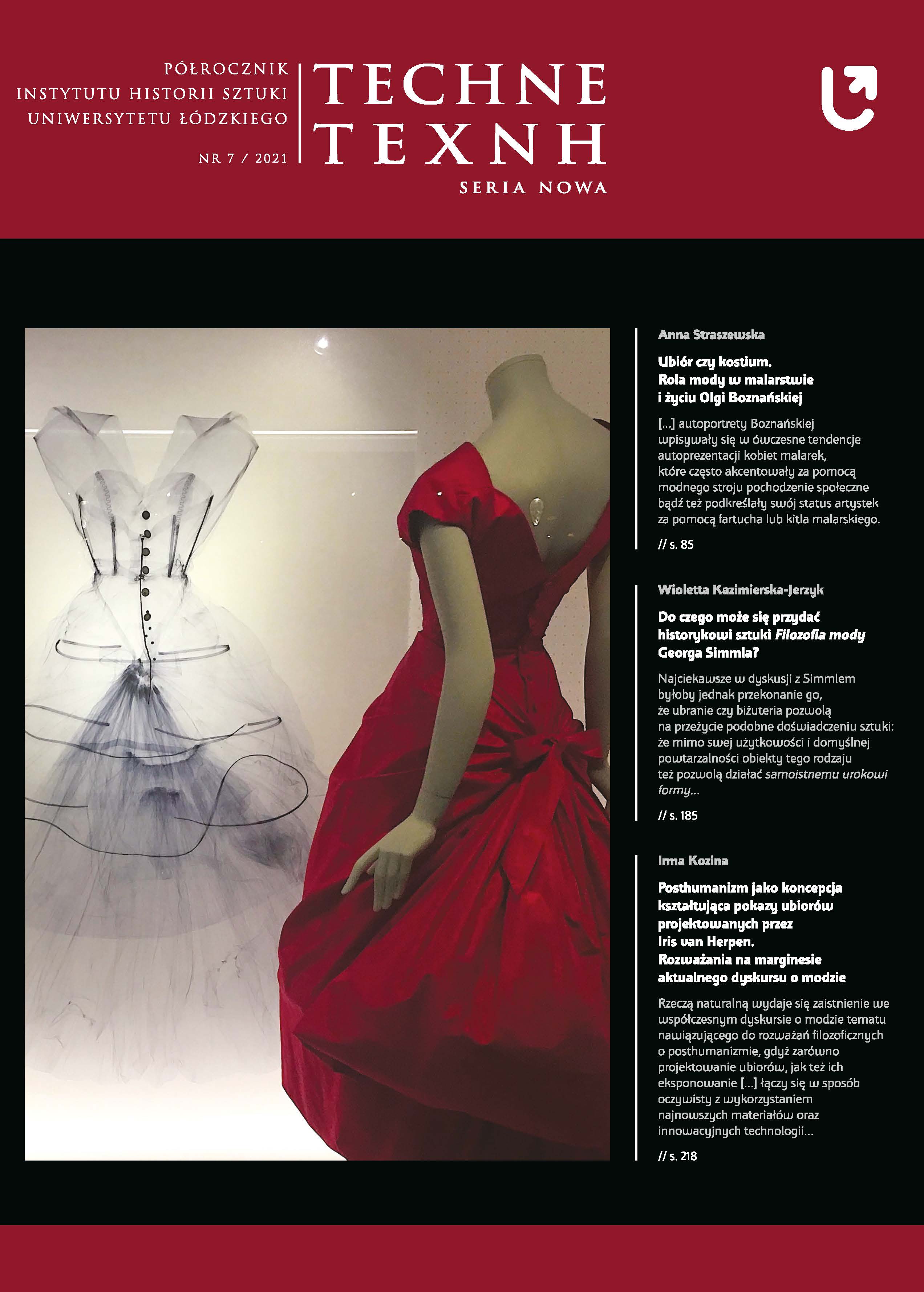„Być dobrze zasznurowaną”. Gorset w modzie damskiej, czyli o reinterpretacji przeszłości
“To be well laced up“. A corset in women's fashion, i.e. a reinterpretation of the past
Author(s): Łukasz GrzejszczakSubject(s): Fine Arts / Performing Arts, Sociology of Culture
Published by: Wydawnictwo Uniwersytetu Łódzkiego
Keywords: lingerie; corset; 19th-20th century European fashion; history of clothing; sociology of fashion
Summary/Abstract: The structure of a corset changed over the course of the last century. Its shape was determined by the aesthetic ideal of a given era. At the end of the 19th century, it came to be recognized as a social symbol of women’s fashion, becoming a key part of the phenomenon of the pursuit of fashion, characteristic for the wealthy social strata of that time. From the 1880s, its form began to change and the necessity of wearing it became a widely discussed topic. Doctors and newly asserted representatives of feminist movements spoke out about harmful effects of the corset on the women’s health through series of lectures and informative brochures. However, it was believed that a woman, being a “temptation” for a man, was in need of a kind of an “armor” providing protection. In “The Theory of the Leisure Class”, Thorstein Veblen emphasized that the corset was worn to “lower the subject’s vitality and rendering her permanently and obviously unfit for work” It had social significance, as the woman became morally invincible. At that time, he also shaped the tailoring structure of the garment, considering its artistic sources of inspiration, such as Art Nouveau stylization or the influence of Japaneseism. The way it was laced and worn had a direct impact on women’s health. Therefore, a gradual dethronement of the corset started to occur, encouraged by women’s increased physical activity, participation in sports and actions of feminist movements, as well as fashion designers adjusting their proposals to the requirements of body ergonomics. This led to the liberation of women in the 10’s of the twentieth century from the shackles of corsets. However, due to the actions of various designers, the corset returned in the second half of the 20th century in the form of “memory copy and styling implant”. One can recall the “Ligne Carolle” publicized by Christian Dior, or the underwear corsets common in the 1950s, worn under evening dresses, which came to fashion thanks to English designers Norman Hartnell, Hardy Amies and Charles James, who promoted women’s ‘hourglass’ silhouette in fashion. Moreover, since the 1980s once could observe appearances of a corset as a reinterpretation of its original form and function, reflected in designs by Jean-Paul Gaultier, or Issey Miyake’s anatomical corset-armor, which imitates human skin. The article is devoted to the characteristics of the form and function of the corset as an element of women’s clothing and its implantation into contemporary fashion by giving it new distinctions.
Journal: TECHNE. Seria Nowa
- Issue Year: 2021
- Issue No: 7
- Page Range: 91-106
- Page Count: 16
- Language: Polish

